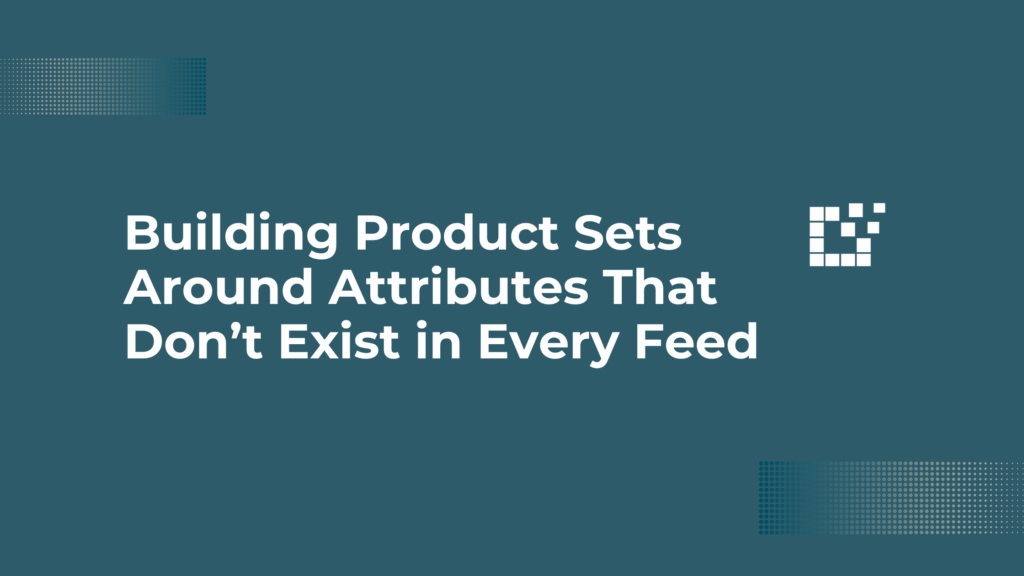Export Network and Merchant Data Simultaneously

Datafeedr connects to dozens of affiliate networks and thousands of merchants globally. When getting set up with Datafeedr, you’ll first connect with the affiliate networks you work with, such as Rakuten, CJ and Impact. Once your affiliate networks are added to your Datafeedr account, you can link directly to the specific merchants you partner with […]
Building Product Sets Around Attributes That Don’t Exist in Every Feed

Not every merchant feed includes the same attributes. One merchant might list a product’s gender or material, while another leaves that field blank. When you’re building Product Sets that depend on those attributes, missing data can cause gaps in your results, or make filtering less effective. You can solve that by assigning a default value when an […]
How to Mix AND and OR Operators in Advanced Product Queries

When building Product Sets, sometimes you need to include multiple keywords, exclude others, or combine conditions to describe a very specific set of products. That’s where using AND and OR operators together gives you more control. Using AND tells the search to return only products that include all listed terms. For example, searching for “winter AND coat” will return products that […]
Import Multiple Attributes from a Single Field

In affiliate storefronts, structured attributes like size, color, or material make a big difference. But what happens when a merchant places multiple values in one field – like “Small, Medium, Large” in a size field? You don’t want to treat that as a single attribute and lose the fine detail. Instead you can pull each […]
Keeping Comparisons Consistent by Currency

If you work with merchants across different countries, you have probably noticed that prices can appear in multiple currencies. Creating separate Comparison Sets by currency keeps prices accurate, consistent, and easier to compare. If one product shows $49 and another shows €45, the comparison is no longer clear. Even small exchange rate differences can throw […]
From Budget Finds to Luxury Picks: Building Price Based Product Sets

Whether you want to highlight budget friendly products or showcase premium items, price based Product Sets give you a flexible way to curate collections that fit a specific audience or campaign. Some shoppers may be hunting for deals, while others are looking to invest in higher end products. By shaping your Product Sets around price […]
Balancing Precision and Coverage in Product Searches

Sometimes you create a Product Set, run your search, and realize the results are thinner than expected. Maybe a merchant’s feed doesn’t include many items for a niche term, or maybe the data varies just enough that your filters cut too deep. Instead of tightening your filters even more, expanding your query slightly can help […]
Create a Storefront That Mirrors Merchant Discounts

Discounts are constantly shifting. Merchants update prices, add promotions, and rotate clearance items on a frequent basis. If you are trying to track those changes by hand, keeping your storefront aligned with current discounts becomes challenging. With Product Sets, you can let filters do the heavy lifting. By targeting fields like sale price or discount […]
Find More With Fewer Searches: Using OR in Your Queries

When building Product Sets, it is common to search for variations one at a time. You might look for “red shoes,” then run another search for “blue shoes,” or “green shoes.” With the OR search operator, you can combine multiple keywords in a single query and return all of those variations at once. This way, you can […]
Building Content Around Self Updating Product Sets

With filters in place, Product Sets update themselves as merchant feeds change, so your content stays current without you needing to swap products in and out every day. Examples of Self Updating Content Here are a few example types of content that work especially well with self updating Product Sets: Sale or discount collectionsUse sale […]